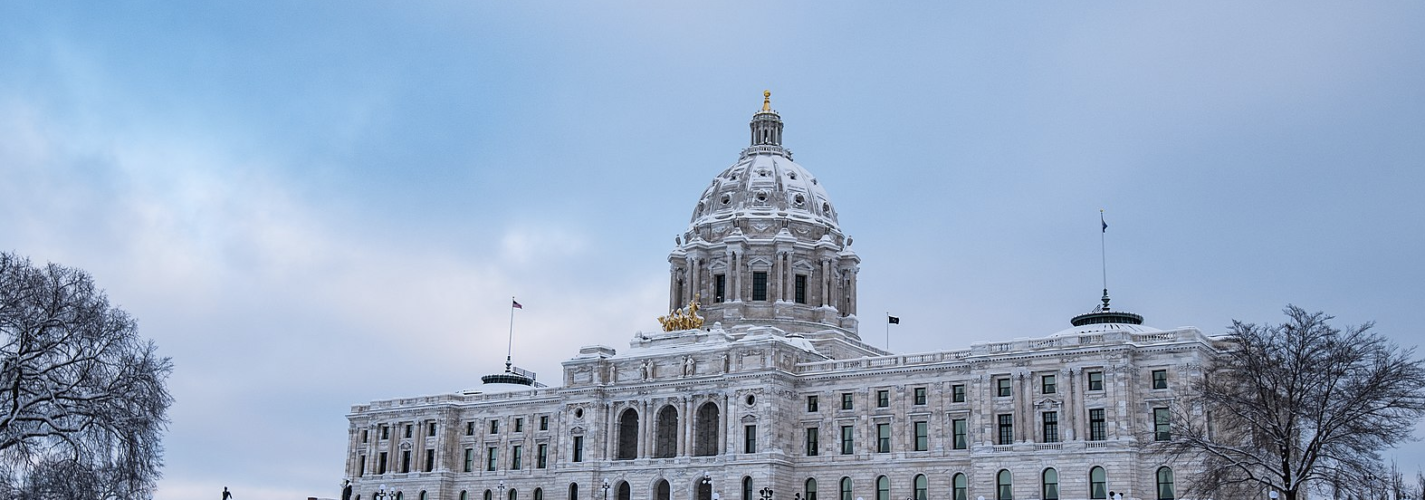What’s in the Governor’s Education Budget?
By Krista Kaput
Late January, Governor Walz released a budget proposal with 428-pages on education. Many of the priorities tie back to his new Due North Education Plan: a roadmap for transforming education in Minnesota. The budget conveys the Governor’s issues and represents a starting point for negotiations. And while the budget contains many provisions that would benefit students, there are a handful of notable items we’ll be watching closely.
The Context: $750M in New Education Spending
One sound bite you likely heard in the news is that despite a projected $1.27 billion deficit, Governor Walz has prioritized education, proposing an additional $745.6 million in new funding over the 2022 and 2023 fiscal years. This represents a 3.7% increase over the $19.9 billion allocated to education in the last budget. (The larger context: Minnesota spends about 42% of general fund dollars on education.)
Per-Pupil Spending: The Biggest Piece of the Pie
Most of the proposed education budget (41%) goes to the General Education Formula. This is the biggest source of state revenue for districts, sending $6,567 per student. Governor Walz is proposing raising the general education formula by 1% next year and 2.5% the following year (to a total of $6,799 per student). These increases are important because costs like teacher salaries and benefits keep increasing.
COVID-19 Related Allocations
The budget allocates $67.4 million in state dollars for one-time COVID-19 recovery needs. These funds would support summer programming to address learning loss, mental health supports, hands-on learning opportunities, and investments to support high-school graduates in their postsecondary transition. The budget also includes $25 million to ensure funding stability for schools that have experienced temporary fluctuations in enrollment due to COVID-19.
These state funds would help supplement $75 million in federal COVID relief funds, which are also allocated in the budget to expand in-person summer programming, provide youth programming, and more.
While these investments are a good start, there is still a lot of work to do as policymakers—at the local, state, and federal levels—consider how to measure and address learning loss, allocate resources equitably, and plan for long-term recovery.
Increased Access to Rigorous Coursework for Students of Color
There are a number of financial barriers that can stand in the way of access to rigorous coursework. The budget proposes $5 million annually to expand access to rigorous coursework programming—Advanced Placement (AP), International Baccalaureate (IB), concurrent enrollment (CE), and career and technical education (CTE)—for students of color and other underserved populations. This includes:
- $3.2 million in grants to districts and charter schools to help them increase their rigorous coursework offerings, and
- $1.8 million in grants to support professional development and incentives for high-school teachers to teach rigorous coursework offerings, as well as supplement other program expenses.
These funds would help to close the large disparities in rigorous coursework enrollment between students of color—particularly Black, Latino, and Indigenous students—and white students.
Expanding Grow Your Own
The Governor allocates $4 million to the state’s “grow your own” teacher preparation programs. Research indicates that teachers who are prepared through “grow your own” programs are more racially diverse than traditional teacher preparation programs and, after completing the program, are more likely to be retained. With a 96% white teacher workforce—a statistic that hasn’t changed in nearly two decades—this investment could help to increase the percentage of teachers of color in Minnesota.
Investing in Non-Exclusionary Discipline Practices
Minnesota has a long and well-documented history of disproportionately suspending and expelling students of color and students with disabilities. To help address these disparities, the Governor proposes $2.5 million for grants to train staff on non-exclusionary discipline practices, with oversight from the Department of Education.
Special Education Cross-Subsidy
The cost of special education services exceeds the number of schools that are reimbursed by either the federal or state government. The gap—known as the special education cross-subsidy—has been a growing challenge for districts and a major barrier to financial stability. Currently, districts spend an average of $808 more per student than they receive. While the budget doesn’t fully address the problem, it allocates $72.7 million to help districts cover the costs of the cross-subsidy, which frees up resources that they can use on other education-related expenses.
Policy Change to Compensatory Revenue
Last spring, the Office of the Legislative Auditor released a report on Compensatory Revenue, a $551 million pot of money that is allocated to districts based on the concentration of low-income families in their schools. Currently, only 50% of the money has to be allocated directly to the schools that generate the funds, and the rest can be used across the district. The proposal would change this to require 80% of the funds go directly to the school, which is an important first step in making sure the funds are going to the students they’re supposed to support.
Early Learning
The budget includes a handful of provisions on early childhood, both within and outside of the education budget. In education, the budget allocates some federal COVID funds to increase early learning scholarship access for the summer. The Governor also allocates $40.9 million to maintain 7,160 voluntary pre-k seats. On the policy side, the Governor recommends requiring Kindergarten Entry Profile assessments for these programs. The most notable expenditure outside of education is $47.5 million to increase reimbursement rates for the Child Care Assistance Program.
What’s Next?
While the Governor’s budget lays out his priorities, it’s still up to the Senate and the House to work together to come up with a budget to submit to the Governor. This will likely be a bit contentious; because Republicans control the Senate, and Democrats control the House. EdAllies will continue to follow the process and report on updates.

